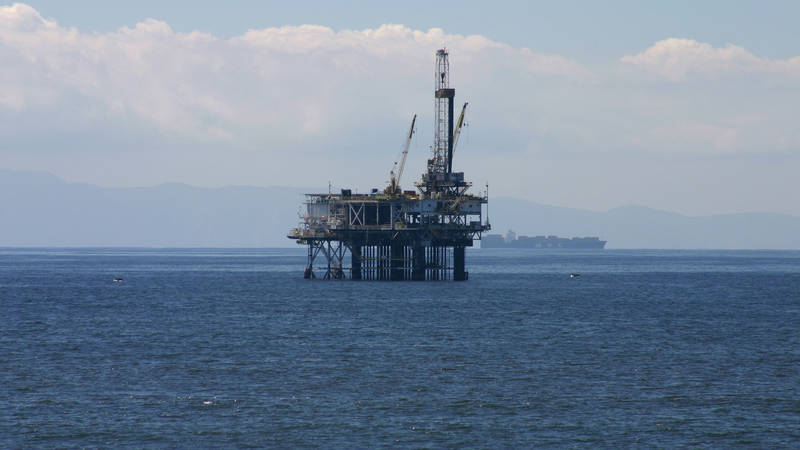Secretary of the Interior Ryan Zinke may be on his way out, but proposals he advanced and regulations his agency dismantled during his tenure will have long-lasting impacts for our parks and public lands.
Early in his tenure as Secretary of the Interior, Ryan Zinke began prioritizing the Trump administration’s “energy dominance” policies across the lands he managed. Throughout his 20 months at the agency, Zinke attempted to systemically increase production of fossil fuels with less oversight and public involvement — a single-minded focus that has directly threatened America’s public lands and waters. 2018 has shown us what “energy dominance” really looks like on the ground, and it doesn’t look good for our parks.
Here are five ways the Trump administration has prioritized oil and gas development over parks in 2018.
1. A new and unimproved oil and gas leasing process
Early in 2018, the Department of the Interior quietly ended a series of reforms put in place in 2010 that allowed the public to have greater say in the leasing of federal lands for oil and gas development. Under the new process, oil and gas leases are all but rubber-stamped by the Bureau of Land Management (BLM) without public comment. The changes include reducing the window to protest leases from 30 days to only 10 days and making review under the National Environmental Protection Act — a bedrock environmental law protecting public lands — optional.
Additionally, the BLM is putting up enormous acreage for sale every three months. In 2018 alone, the administration has offered nearly 5 million acres for lease — an area larger than Denali National Park — flooding the West with development and leaving national parks surrounded by oil and gas rigs. Hundreds of thousands of acres were leased for $10 each, less than the cost of a pizza. By comparison, the BLM offered less than half that amount — 1.9 million acres — for lease in 2016.
2. Repeal of methane capture rules
Rules governing methane pollution are essential, as the gas can trap significantly more heat than carbon dioxide, exacerbating climate change. Methane also contributes to other air quality problems, such as smog and ground-level ozone that obscure park views and can threaten human health. Oil and gas facilities release billions of cubic feet of this pollutant into the atmosphere every year, wasting energy and money and threatening our parks. Earlier this year, Congress attempted but was unable to repeal an Obama-era rule requiring oil and gas operators on BLM-managed lands to capture excess methane, a climate-altering chemical, instead of releasing it into the atmosphere. Instead, the administration finalized a new rule in 2018 which essentially guts the original and allows the harmful process to continue. The Environmental Protection Agency is now doing the same thing for similar rules under its purview.
3. Opening our coasts to offshore drilling

Courting Disaster
The Trump administration released a draft plan to open up vast new areas of America’s coast to oil and gas drilling, putting national parks, wildlife and local economies at risk.
See more ›The administration’s quest to dramatically increase energy production doesn’t stop on land but extends into our waters as well. The administration is expected to soon release a five-year leasing plan that could open up much of our coasts to oil and gas drilling. In advance of the full plan, the administration recently approved allowing companies to harm protected marine mammals through seismic airgun testing. This testing is the first step to determine where companies will find it profitable to drill, and the practice has been linked to the stranding deaths of whales, dolphins and porpoises, and can cause deafness and other impairment in animals. Thirty-three national park sites from Maine to Florida could now be affected by this testing. Seeing animals such as whales and dolphins at these parks is a major draw for visitors, who drove $2.73 billion in economic output in 2016 alone.
4. Ending landscape-level planning
In the same policy directive that helped cut the public out of oil and gas leasing on public lands, the Interior Department also killed master leasing plans. These plans were a “smart from the start” approach to oil and gas leasing that assessed the health and current uses of an entire landscape, involving a broad range of stakeholders to identify potential areas of conflict prior to oil and gas leasing. These leasing plans were thoughtful and inclusive, with the goal of planning first and leasing later to protect sensitive landscapes and only allow leasing in appropriate places. The policy grew out of a controversial 2008 lease sale that would have allowed oil rigs right on the doorstep of Arches and Canyonlands National Parks. Ultimately the area and its parks were instead protected under a successful master leasing plan. Rescinding this policy is returning our public lands to the same threats they faced in 2008 — inappropriate development right next to their borders.
5. Threatening wildlife migration corridors
Stay On Top of News
Our email newsletter shares the latest on parks.
Earlier this year, Secretary Zinke signed a Secretarial Order aimed at improving priority habitats within important migration corridors across the West. Unfortunately, the agency is ignoring its own best advice about migration corridors and continues to lease large amounts of land directly in priority wildlife habitat. For example, the administration has already announced that it intends to lease well over 150,000 acres for oil and gas development in a key mule deer migration route south of Grand Teton National Park. We need federal land managers to step up and follow their own best practices when it comes to protecting habitat and the wildlife that rely on it.
Secretary Zinke’s parting legacy will be as an Interior Secretary who prioritized fossil fuel development above all else, even above protecting the crown jewels of our public lands system, our national parks. NPCA will continue to fight for the integrity of our parks and the landscapes that surround them. 2019 will bring us a new Congress and a new Secretary of the Interior — and a new chance to fight back against “energy dominance,” restore balance and protect our public lands.
Sponsored Content: Go Solar for Less
SunPower and NPCA are working together to conserve our natural resources while making it easier and more affordable for NPCA members and supporters to go solar. SunPower is offering a $500 mail-in rebate to NPCA members and supporters and will donate $500 to NPCA each time a member or supporter goes solar.
About the author
-
 Matthew Kirby Former Senior Director, Energy and Landscape Conservation
Matthew Kirby Former Senior Director, Energy and Landscape ConservationMatt has spent the last decade running campaigns to protect the public lands he loves. He oversaw NPCA's work to protect parks and the landscapes that surround them from energy development from 2018 to 2024.


